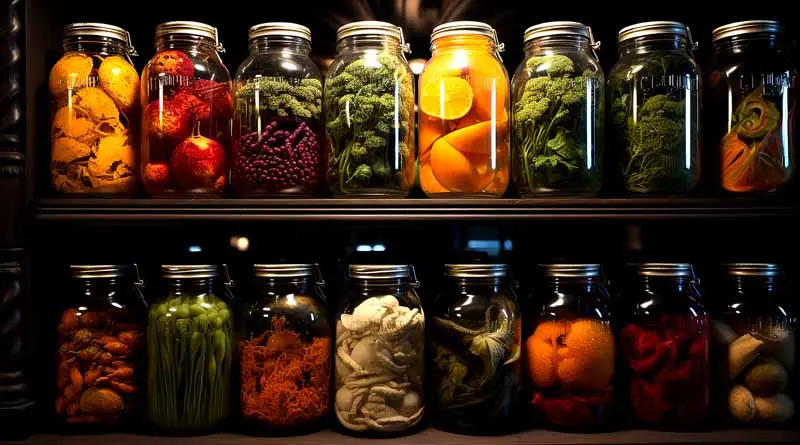
How do I maintain and rotate my food storage?
The Art of Keeping: How Do I Maintain and Rotate My Food Storage?
On a crisp autumn evening, as the last leaves fell from the trees, I found myself in the pantry, surrounded by shelves stocked with cans and packages. It was time for the seasonal audit of my provisions, a practice as routine as the changing seasons, yet as crucial as any measure in my household’s preparedness plan. This led me to ponder the critical question: How do I maintain and rotate my food storage effectively?
Understanding the Importance of Proper Food Storage and Maintenance
Maintaining and rotating food storage goes beyond simply keeping your pantry stocked; it’s about ensuring that your stored food remains safe, nutritious, and appetizing when you need it most. Whether in response to an emergency or for everyday meals, the condition of your stored food can significantly affect your health and comfort. Thus, effective management of your food supplies is crucial.
Options for Storage
The methods for storing food are as varied as the foods themselves, with each method suited to particular types of food and offering different lifespans:
- Freezing: Ideal for preserving the freshness of meats, fruits, and vegetables, freezing can keep food safe for extended periods, sometimes up to a year or more, depending on the item.
- Canning: By canning foods, you can achieve a shelf life that extends for several years. Canning is perfect for fruits, vegetables, and even meats. It involves storing food in airtight containers that have been heated to kill off spoilage-causing bacteria.
- Dry Storage: For pantry staples like grains, beans, pasta, and spices, dry storage is the most effective method. These items need a cool, dry place and can last for years if stored properly.
Obstacles to Effective Rotation
The challenges in maintaining a robust food storage system include:
- Expiration and Spoilage: Each food item has a different shelf life, and keeping track of these can be complex. Some items may spoil faster than anticipated, especially if not stored under ideal conditions.
- Inconsistent Usage: It’s common to store foods and forget about them, especially if they are buried behind more recent purchases. This leads to wastage when these items finally come to light, often past their prime.
- Space Constraints: Not everyone has ample storage space. Smaller kitchens and pantries mean that one must be selective about quantity and type of food stored, which can limit options for effective rotation.
Implementing the Best Solution
My approach to mastering food storage maintenance involves several best practices that help ensure freshness and minimize waste:
First-In, First-Out (FIFO) Method
- This technique is foundational in both commercial kitchens and efficient home pantries. By organizing food so the oldest stock is used first, it reduces the chance of items expiring unused. Labeling each item with the date of purchase and positioning newer items behind older ones ensures no item gets overlooked.
Regular Audits
- With each change of season, I take a day to thoroughly inspect my pantry. This includes checking expiration dates, looking for any signs of package damage or pest infestation, and rearranging items according to the FIFO method. This regular practice helps avoid the unpleasant surprise of finding spoiled or infested food.
Strategic Placement
- By placing items that need to be used soon at eye level or in another easily accessible location, their visibility reminds me to use them promptly. This strategic placement helps in utilizing food items before they spoil, reducing waste.
Understanding Shelf Life
- Maintaining a chart inside the pantry door that lists the expected shelf lives of common foods, whether stored in the pantry, refrigerator, or freezer, serves as a quick reference to manage usage and expectations. This chart aids in planning meals around the food that needs to be consumed sooner rather than later, ensuring nothing goes to waste.
Conclusion
By implementing these strategies, I have streamlined the way I store and use my food reserves, making the process both efficient and economical. This systematic approach not only ensures I have a continuous supply of fresh and safe food but also significantly cuts down on waste, making the most of every item I purchase. This isn’t just about saving money—it’s about creating a sustainable way of living that can weather both the expected and unexpected challenges of daily life.
Resources and Tools Needed
To efficiently implement these practices, several tools are essential:
- Labels and markers: For dating food items as they’re stored.
- Storage containers: Airtight containers can extend the life of food once opened.
- Inventory list: Keeping a running list of what’s in stock, where it is, and when it expires can help in planning meals around what needs to be used soonest.
- Shelving units: Adjustable shelves can accommodate different sizes of products and help keep them organized.
Conclusion: A System That Sustains
Now, as I close the pantry door, ready to enjoy a well-deserved cup of tea, I reflect on the peace of mind that comes from knowing my food storage is well-organized and maintained. It’s not just about having supplies; it’s about managing them in such a way that they’re ready when needed. Through consistent maintenance and rotation, I ensure that nothing goes to waste, and my family can rely on our stockpile in times of need. This isn’t just preparation; it’s a way of life that sustains us, come what may.






